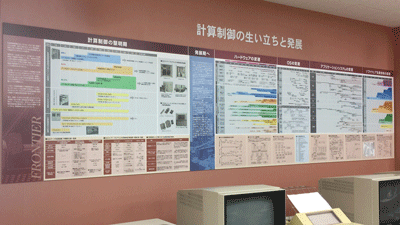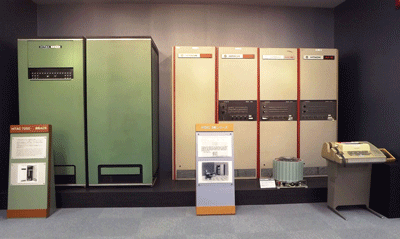

- Home >
- Satellite Museums >
- 2017 >
- Hitachi Omika Control Historical Materials Room
Hitachi Omika Control Historical Materials Room


| Location | Omika Works, Infrastructure control system Division, Social Infrastructure Systems Business Unit, Hitachi, Ltd.
5-2-1 Omika-cho, Hitachi-shi, Ibaraki-ken, 319-1293 |
|---|---|
| Visitor information | Not open to the public (Ask for a visit) |
| Contact | Engineering Department, Omika Works Tel.+81-294-53-1111 https://www.hitachi.com/products/it/control_sys/portal/index.html (General inquiries) |
Omika Works, Hitachi, Ltd. was founded in 1969 as dedicated plant for control systems, integrating the control technology and control computer departments that had until then been divided among several different plants. At present, in 2018, it provides total solutions in fields that support key industrial facilities in industries such as power generation, steel, chemical, and automobile, and the various types of social infrastructure.
Omika Control Historical Materials Room contains exhibits of events as well as the transitions in representative products, control technologies, production technologies, and quality assurance that have taken place since the founding of the Omika office until the present. These are presented in a year-by-year format for each field. This room also features actual control computers, such as the HIDIC 80 and HIDIC V90 series, which were in operation at customer sites over the course of forty years until the present and have been kept in working order. Related manuals have also been maintained and are being used for software maintenance.
The Historical Materials Room is divided into eight areas: (1) Video overview, (2) Actual equipment display, (3) Transitions in computer control, (4) Transitions in printed circuit boards, (5) Delivery history of representative application systems, (6) Transitions in control technology (systems, manufacturing and quality assurance, components), (7) Documents, materials, brochures, manuals, and (8) Information Processing Society of Japan-certified technology heritage (Structured Programming Language SPL). Each area has panels and actual items displayed in an easy-to-understand and systematic arrangement.
